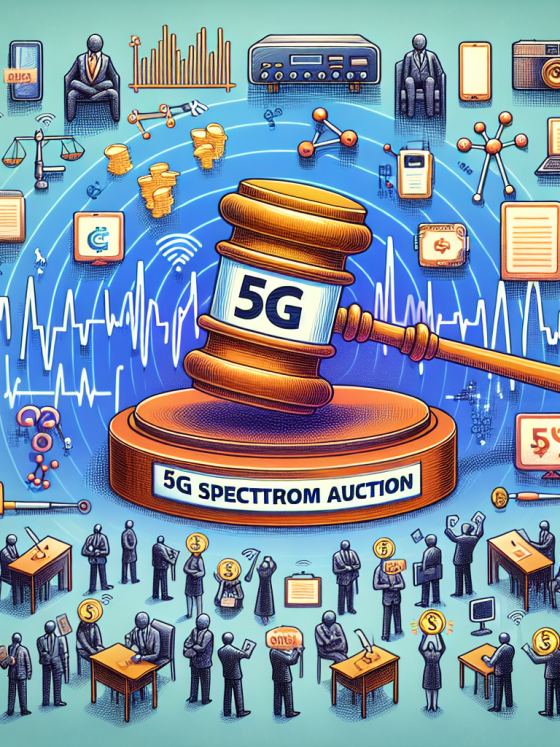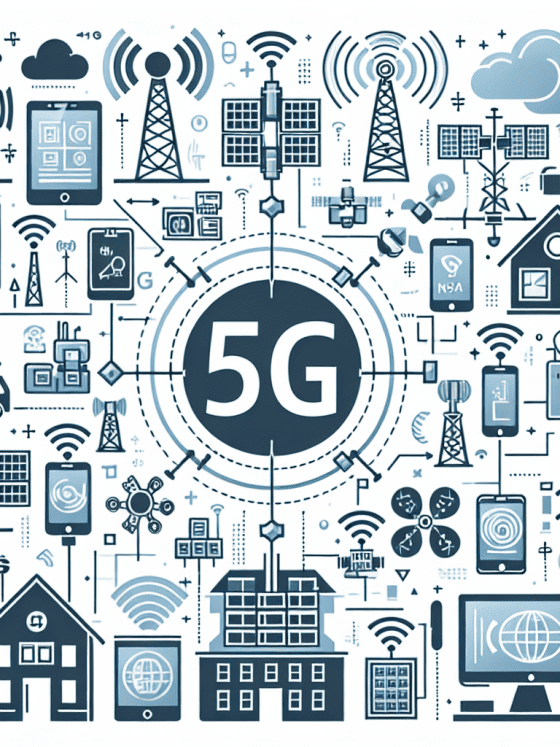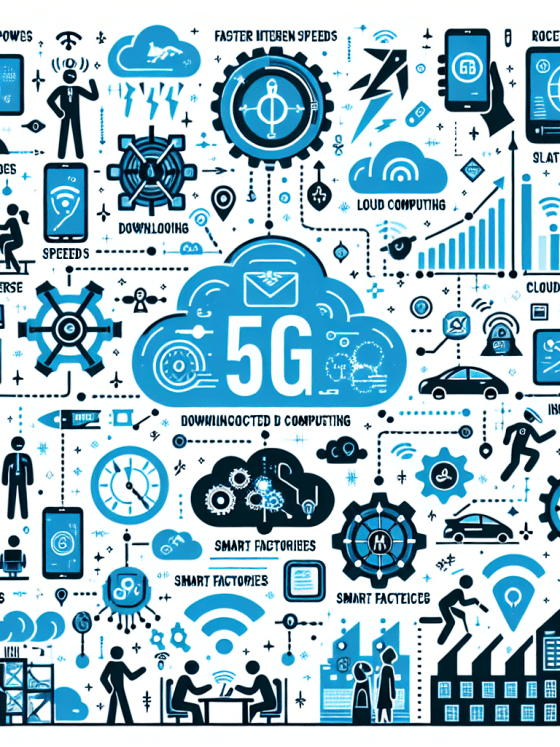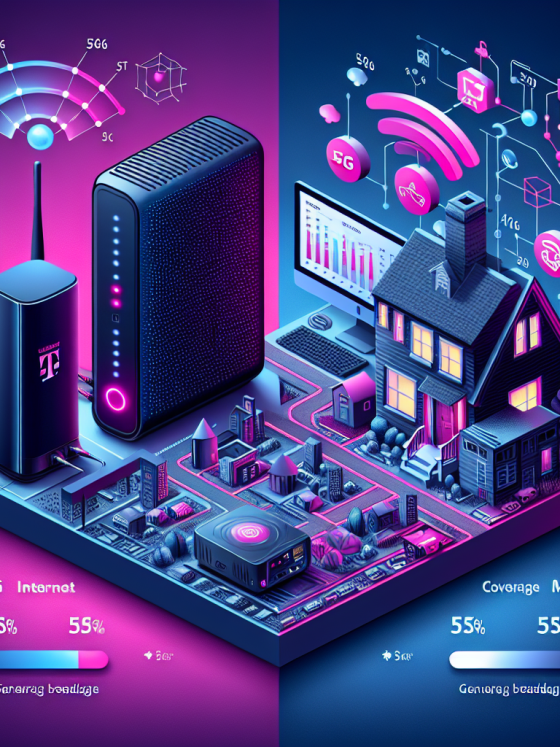Understanding 5G Network Infrastructure: Essentials for Beginners

This opening of ‘Understanding 5G Network Infrastructure: Essentials for Beginners’ offers background to enable a full understanding if the basics of fifth-generation (5G) wireless. For this purpose, realme also introduced this segment to shed some light on the 5G basics and the evolution of 5G from previous generations like 3G & 4G particularly highlighting the major technological advancements and speed, latency & connectivity differences that you will notice in 5G networks. It is a step towards preparing for the Internet of Things (IoT), autonomous vehicles and smart cities enabled by the transformative possibilities open to us with 5G, such as higher capacity mobile broadband, ultra-low latency and large-scale machine type communications. As a result, these are very important intro concepts because it gives an insight to beginners on what to expect and gets them in the mood as well as serves as a launching pad for understanding more complicated parts and functions which would be explained later which makes knowledge about 5G architecture, deployment and real-world applications possible. The bulk of this is crucial information for anyone seeking to be in the loop at all on modern telecomm and where it may go from here.
What is 5G?
5G (Fifth generation) mobile network technology is a step ahead of its predecessors with enhanced speed, latency reduction and larger connection capabilities. A natural progression from 4G LTE, 5G is intended to handle rapidly growing data and communications needs of today.fc It supports three spectrum bands — low, mid, and high — with each playing roles different from one another. Wide coverage is delivered by the low band, balance of coverage and speed comes from mid band, and ultra-fast speeds over smaller areas are provided by high band which is in some cases referred to as ‘millimeter wave” (mmWave).
5G is not going to only bring faster internet on our smart-phones but also help improve technologies in the field of Internet of things (IoT), autonomous vehicles, augmented reality (AR) and remote healthcare. With its high bandwidth and low latency, LTE-V2X is used in this scenario to meet the real time communication requirements, and enable massive data traffic needs of smart cities and other high-tech infrastructures. To understand the sections of 5G that could be most impactful for everyday life as well as spur entirely new categories yet to come from the next-generation network technology help, for novices in short.
Definition and basic overview
enhanced speed, capacity and connectivity of wireless networks via the fifth generation of mobile communications technology known as 5G networks. 5G does this by utilizing bands of higher frequency spectrum, such as millimeter waves, which enable much faster data transfer speeds and lower latency compared to current LTE-Advanced technology. By enabling these breakthroughs, you can deliver applications such as the demand for ultra-high-definition (UHD) video streaming and the rapidly growing Internet of Things (IoT) segment.
The core elements of a stand-alone 5G network include the Radio Access Network (RAN), the core network, and user equipment. The small cells, macro cells and Massive MIMO (Multiple Input Multiple Output) technology within the RAN help together to control and subsequent flow of the high-speed data. The core network is completely re-architected to work much more smoothly with what is already there, and able to deliver services far more efficiently and nimbly. Lastly, the F5G modem is designed for user devices to make sure that consumers are able to leverage 5G networks high-speed capabilities. Together, these aspects deliver a new level of ubiquitous networking that opens the door to industry potential innovation.
Evolution from previous generations (1G to 4G)
enhanced speed, capacity and connectivity of wireless networks via the fifth generation of mobile communications technology known as 5G networks. 5G does this by utilizing bands of higher frequency spectrum, such as millimeter waves, which enable much faster data transfer speeds and lower latency compared to current LTE-Advanced technology. By enabling these breakthroughs, you can deliver applications such as the demand for ultra-high-definition (UHD) video streaming and the rapidly growing Internet of Things (IoT) segment.
The core elements of a stand-alone 5G network include the Radio Access Network (RAN), the core network, and user equipment. The small cells, macro cells and Massive MIMO (Multiple Input Multiple Output) technology within the RAN help together to control and subsequent flow of the high-speed data. The core network is completely re-architected to work much more smoothly with what is already there, and able to deliver services far more efficiently and nimbly. Lastly, the F5G modem is designed for user devices to make sure that consumers are able to leverage 5G networks high-speed capabilities. Together, these aspects deliver a new level of ubiquitous networking that opens the door to industry potential innovation.
Key features differentiating 5G from earlier technologies
enhanced speed, capacity and connectivity of wireless networks via the fifth generation of mobile communications technology known as 5G networks. 5G does this by utilizing bands of higher frequency spectrum, such as millimeter waves, which enable much faster data transfer speeds and lower latency compared to current LTE-Advanced technology. By enabling these breakthroughs, you can deliver applications such as the demand for ultra-high-definition (UHD) video streaming and the rapidly growing Internet of Things (IoT) segment.
The core elements of a stand-alone 5G network include the Radio Access Network (RAN), the core network, and user equipment. The small cells, macro cells and Massive MIMO (Multiple Input Multiple Output) technology within the RAN help together to control and subsequent flow of the high-speed data. The core network is completely re-architected to work much more smoothly with what is already there, and able to deliver services far more efficiently and nimbly. Lastly, the F5G modem is designed for user devices to make sure that consumers are able to leverage 5G networks high-speed capabilities. Together, these aspects deliver a new level of ubiquitous networking that opens the door to industry potential innovation.
Core Components of 5G Infrastructure
If you want to know more about how this revolutionary technology work, these are the key elements of 5G infrastructure: **The Radio Access Network (RAN)** – with small cells, macro cells and distributed antennas, IT covers an extensive coverage, high data rates but short latency. 2) The **Core Network (CN)**, re-architected from 4G, can help in high-speed data forwarding, essential network functionalities and improvements in securing traffic. Network Slicing with the help of network slicing where respective networks tailor-made to meet specific application requirements have been made by virtualization layers for optimal performance. * Edge Computing: The computational power will be closer to the user with **Edge Computing**, reducing latency and increasing real-time processing capabilities. With multiple antennas, the network capacity and efficiency increases greatly, thanks to **Massive MIMO (Multiple Input Multiple Output)** technology. These elements work together to enable the revolutionary capabilities of 5G – including ultra-reliable low-latency communication (URLLC), enhanced mobile broadband (eMBB), and massive machine-type communication (mMTC). It is imperative for the ones who in spindle of adopting 5G technology are getting started with their approach.
Small cells and their importance
Small cells also play a foundational role within 5G network infrastructure since they can handle large amount of data and offer wide range coverage. In contrast, these are low-powered cellular radio access nodes and cover 10 meters to a few kilometers, which means such cells are used to serve specific locations in urban areas and have no overlaps between due to limited size of the cell.
Small cells in 5G networks are crucial because they can handle the millimeter wave frequencies used by 5G to send data up and down the pipeline ultrarapidly. These waves have a shorter range and are more easily blocked by buildings then the frequencies currently used in 4G mobile networks. Small cell deployments will help network providers penetrate even further into nooks and crannies with their signals, ultimately leading to a better experience for the end user.
In addition to densifying the network, small cells help increase the capacity of the network by moving data off the macro cells and reducing congestion to make them more efficient. This densification of the network is essential to meeting 5G’s stringent latency and throughput requirements, allowing IoT, augmented reality and autonomous vehicle applications to work flawlessly.
Millimeter wave spectrum
A key element of 5G network infrastructure is the millimeter wave (mmWave) spectrum, which hits ridiculously high speeds. MmWave frequency range Approximately 24 GHz and above its bandwidth is significantly larger than the lower frequency bands used on previous generations of mobile cellular networks, making it possible for more data to be carried over a longer distance at faster speeds and larger building penetration capabilities (needed for smart video streaming, Virtual Reality/Augmented reality etc., IoT devices).
While mmWave technology has it challenges, MmWaves have limited range and do not penetrate through obstacles (walls, buildings, etc.), which inherently require dense networks of small cells and complex beamforming to maintain a good link. This is to say nothing of environmental factors, which also degrade mmWave signals – rain and lots of falling leaves are apparently bad news for these frequencies. Regardless of the challenges, high-frequency spectrum will necessarily form the basis for delivering the speeds and low latency required to define next-generation wireless connectivity, ensuring it is a key technology for 5G network evolution.
Massive MIMO (Multiple Input Multiple Output) technology
A key element of 5G network infrastructure is the millimeter wave (mmWave) spectrum, which hits ridiculously high speeds. MmWave frequency range Approximately 24 GHz and above its bandwidth is significantly larger than the lower frequency bands used on previous generations of mobile cellular networks, making it possible for more data to be carried over a longer distance at faster speeds and larger building penetration capabilities (needed for smart video streaming, Virtual Reality/Augmented reality etc., IoT devices).
While mmWave technology has it challenges, MmWaves have limited range and do not penetrate through obstacles (walls, buildings, etc.), which inherently require dense networks of small cells and complex beamforming to maintain a good link. This is to say nothing of environmental factors, which also degrade mmWave signals – rain and lots of falling leaves are apparently bad news for these frequencies. Regardless of the challenges, high-frequency spectrum will necessarily form the basis for delivering the speeds and low latency required to define next-generation wireless connectivity, ensuring it is a key technology for 5G network evolution.
Network slicing
A key element of 5G network infrastructure is the millimeter wave (mmWave) spectrum, which hits ridiculously high speeds. MmWave frequency range Approximately 24 GHz and above its bandwidth is significantly larger than the lower frequency bands used on previous generations of mobile cellular networks, making it possible for more data to be carried over a longer distance at faster speeds and larger building penetration capabilities (needed for smart video streaming, Virtual Reality/Augmented reality etc., IoT devices).
While mmWave technology has it challenges, MmWaves have limited range and do not penetrate through obstacles (walls, buildings, etc.), which inherently require dense networks of small cells and complex beamforming to maintain a good link. This is to say nothing of environmental factors, which also degrade mmWave signals – rain and lots of falling leaves are apparently bad news for these frequencies. Regardless of the challenges, high-frequency spectrum will necessarily form the basis for delivering the speeds and low latency required to define next-generation wireless connectivity, ensuring it is a key technology for 5G network evolution.
How 5G Works
5G, the fifth-generation cellular network technology, works by using faster millimeter waves (mmWave) to complement the lower radio frequencies used in previous technologies. Rather than large, standalone cell towers used in previous technologies, 5G uses a dense network of small cell stations. Tiny cells are mounted close together, usually on streetlights or buildings, to improve coverage and signal power. Image Credits: SnapdragonsThis configuration helps to reduce latency and increases data transfer speeds up to 10Gbps, which is nearly 100 times faster compared in 4G.
5G also employs cutting-edge technologies such as Massive MIMO (Multiple Input Multiple Output), which uses many antennas to control and steer data traffic more effectively, and beamforming, which focuses signal beams on individual users specifically to minimize interference and improve speed. Another core feature is the various layers of network slicing, with operators able to build custom networks for exact use cases – from smart cities to autonomic vehicles – and adds both capacity and reliability.
Role of base stations and cell towers
Base stations and cell towers are elementary elements of 5G deployable networks. Inside these buildings are the equipment needed to send and receive radio signals that allow telephone, internet, and other wireless communications. In 5G, Base Stations are more sophisticated and they’re usually called gNodeBs. It uses higher frequency bands, such as mmWave which, in turn, will make data speeds and latency drop several folds lower than what was offered on earlier generations.
The communication links between user devices and the network are facilitated by cell towers that carry base stations meant for sending radio waves. They are located where coverage and capacity make sense. Large numbers of small cells and distributed antenna systems (DAS) are often deployed alongside traditional macro cell towers to enable the increased data demands and low latency ultra-reliable characteristics of 5G. This infrastructure allows maximize the connection with a wide variety of 5G use cases ranging from high broadband mobile to ultra-reliable and low-latency IoT (Internet of Things) solutions.
Edge computing and its impact on latency
For instance, edge computing becomes a game-changing concept when it comes to 5G network infrastructure – this is because it helps kill off latency by processing data at the edges (that is, near either the source or the end-user). In the traditional world, data has to make its way from the devices of users all the way to a central cloud data center that can be very far away which causes delays. This decentralized analysis is the basis of edge computing; most of the data processing occurs at local edge nodes or devices (e.g., in routers or base stations), which reduces how far data has to traverse.
This will reduce the latency or the time taken to travel the data from its source to destination and back leading for faster response. This reduced latency at the edge is crucial for use cases that require real-time processing, such as autonomous vehicles, virtual reality (VR), and industrial IoT. Edge computing reduces delays, making 5G networks more powerful and reliable, ultimately, allowing a whole new range of applications that rely on ultra-low latency connections and better end-user experience.
Deployment strategies (Standalone vs. Non-Standalone)
To understand 5G network infrastructure first we have to know the type of deployment strategies which are Standalone (SA) and Non-Standalone (NSA). NSA deployment is an upgrade to the existing 4G LTE infrastructure that adds 5G capabilities on top without needing a vast plumbing overhaul everywhere at once. This speeds up the 5G deployment and lowers the up-front expenses. Yet, while it boosts existing 4G networks with faster speeds and better capacity, it does not fully harness the low latency or use cases like massive IoT and autonomous driving that 5G enables.
On the other side, Standalone deployment is created from scratch with all 5G functionalities and does not rely on the 4g core. This unveils another 5G center system, includes more exceptionally valuable ones like Network Slicing, increased security, and asset the executives. While the SA deployment requires significant investment and moreextended roll-out times than an NSA, it sets the stage for unlocking 5G’s full potential of increased throughput, low latency, and massive IoT. Being conversant with these basic deployment strategies is critical for beginners to understand 5G roadmap and perhaps the underlying magic of 5G technology.
The role of fiber optic cables in backhaul
To understand 5G network infrastructure first we have to know the type of deployment strategies which are Standalone (SA) and Non-Standalone (NSA). NSA deployment is an upgrade to the existing 4G LTE infrastructure that adds 5G capabilities on top without needing a vast plumbing overhaul everywhere at once. This speeds up the 5G deployment and lowers the up-front expenses. Yet, while it boosts existing 4G networks with faster speeds and better capacity, it does not fully harness the low latency or use cases like massive IoT and autonomous driving that 5G enables.
On the other side, Standalone deployment is created from scratch with all 5G functionalities and does not rely on the 4g core. This unveils another 5G center system, includes more exceptionally valuable ones like Network Slicing, increased security, and asset the executives. While the SA deployment requires significant investment and moreextended roll-out times than an NSA, it sets the stage for unlocking 5G’s full potential of increased throughput, low latency, and massive IoT. Being conversant with these basic deployment strategies is critical for beginners to understand 5G roadmap and perhaps the underlying magic of 5G technology.
Benefits and Challenges of 5G
5G networks bring with them whole list of advantages and challenges as a part of their transition. One of the most significant benefits is greatly improved speeds, with up to a potential 10 Gbps data transfer. It works in having the download speed, real time streaming and nice online gaming experience. Further, 5G has ultra-low latency that delivers near instantaneous responses suitable for applications like autonomous driving, remote surgery and augmented reality82. This allows more devices to be supported per square kilometer, thus promoting the growth of IoT with high-congestion areas (e.g., stadiums, smart cities) specifically within mmWave coverage.
The roll out of 5G however, is not without its challenges. The infrastructure costs are being met by heavy investments in new technologies, such as small cells, and the deployment of these cells en masse is necessary to sustain signal strength and coverage. In addition, there are worries about the security vulnerabilities that more complicated networks introduce. Finally, the public’s concerns about possible health problems and bureaucratic barriers behind 5G technology may hamper the deployment process, adding another obstacle to the widespread use of this generation.
Enhanced mobile broadband
5G networks bring with them whole list of advantages and challenges as a part of their transition. One of the most significant benefits is greatly improved speeds, with up to a potential 10 Gbps data transfer. It works in having the download speed, real time streaming and nice online gaming experience. Further, 5G has ultra-low latency that delivers near instantaneous responses suitable for applications like autonomous driving, remote surgery and augmented reality82. This allows more devices to be supported per square kilometer, thus promoting the growth of IoT with high-congestion areas (e.g., stadiums, smart cities) specifically within mmWave coverage.
The roll out of 5G however, is not without its challenges. The infrastructure costs are being met by heavy investments in new technologies, such as small cells, and the deployment of these cells en masse is necessary to sustain signal strength and coverage. In addition, there are worries about the security vulnerabilities that more complicated networks introduce. Finally, the public’s concerns about possible health problems and bureaucratic barriers behind 5G technology may hamper the deployment process, adding another obstacle to the widespread use of this generation.
Internet of Things (IoT) capabilities
The introduction of 5G network infrastructure level considerably improves internet connectivity and opens up IoT capabilities in a completely different way devices interact and work together. One of the foremost offerings is the significantly improved data transfer speeds that may move up to 10 Gbps aiding almost real-time data exchange between IoT devices. This speedup is what enables more sophisticated applications and real-time analytics, critical for industries such as autonomous driving, smart cities, and healthcare to function. One of the most important ones is 5G latency, which is only a few milliseconds or as low as just 1 millisecond – a feature that will allow quick responses without any latency and delay for mission-critical applications. Moreover, the capacity to support a very large number of simultaneously connected devices (up to 1 million for every square km) makes 5G easily scalable and efficient. Network slicing is another of its distinctive capabilities, which makes it possible to deliver dedicated connectivity that essentially can be configured and specialized for specific IoT use case needs to maximize the performance and utilize resources efficiently. Together, all of these innovations enable a never-before seen level of connectivity, dependability, and efficiency in IoT ecosystems – pouring the gas on innovation across many industries.
Potential security challenges
The introduction of 5G network infrastructure level considerably improves internet connectivity and opens up IoT capabilities in a completely different way devices interact and work together. One of the foremost offerings is the significantly improved data transfer speeds that may move up to 10 Gbps aiding almost real-time data exchange between IoT devices. This speedup is what enables more sophisticated applications and real-time analytics, critical for industries such as autonomous driving, smart cities, and healthcare to function. One of the most important ones is 5G latency, which is only a few milliseconds or as low as just 1 millisecond – a feature that will allow quick responses without any latency and delay for mission-critical applications. Moreover, the capacity to support a very large number of simultaneously connected devices (up to 1 million for every square km) makes 5G easily scalable and efficient. Network slicing is another of its distinctive capabilities, which makes it possible to deliver dedicated connectivity that essentially can be configured and specialized for specific IoT use case needs to maximize the performance and utilize resources efficiently. Together, all of these innovations enable a never-before seen level of connectivity, dependability, and efficiency in IoT ecosystems – pouring the gas on innovation across many industries.
Infrastructure and cost-related challenges
Grasping 5G network infrastructure requires overcoming a myriad of infrastructure and cost challenges. Because 5G uses higher-frequency bands as compared to previous generations, it needs a far denser network of small cells. This has placed pressure for the requisition of numerous small cell sites and upgrading already installed ones thus incurring significant Capex spend. Further, the incorporation of 5G with prevailing forces is difficult and needs modern coordination and complement to make continuity of the connections. Added to all of this is the high cost of buying and running new equipment – particularly antennas, base stations, backhaul systems etc. Backhaul requires high-speed fiber connections, which are slow and expensive to implement. Additionally, regulatory obstacles such as obtaining permits for small cell deployments can result in delays and increased costs. To overcome these challenges, telecom companies will have to work together with governments and other incumbents in order to come up with a cost-effective strategy & a fast track process for 5G roll out.
So what have we concluded?
To sum it up, understanding the basics of 5G network infrastructure is a must for anyone who wants to step into the current telecommunications systems. This technology is a new paradigm, offering unmatched speeds, lower latencies and more connections. Through breaking down these major parts – maybe small cells, massive MIMO, and network slicing – newcomers can learn how 5G is supposed to be able to shake the whole lot from healthcare through smart cities. In addition, millimeter waves technology is being used and carrier aggregation has upgraded, that shows the complex architecture of supporting the advancements. Insight into 5G backhaul and the edge computing used to stitch this anarchy together makes it clear that these aren’t simple rectangle of light churning data to your handheld rectangle of light. In an emerging world of constant inter-connectivity, a sound understanding of 5G infrastructure will not only be essential for a mastery in technological skills but also tributary towards the development of applications forgotten to us today and essential to social progression. In the end, if you embrace 5G then you are getting ready to get involved in the next digital revolution.




![Introduction to 5G Technology [PPT]](https://5ginnovations.top/wp-content/uploads/2024/07/introduction-to-5g-technology-ppt-560x747.jpg)
![Complete Guide to 5G Technology [PDF]](https://5ginnovations.top/wp-content/uploads/2024/07/complete-guide-to-5g-technology-pdf-560x747.jpg)